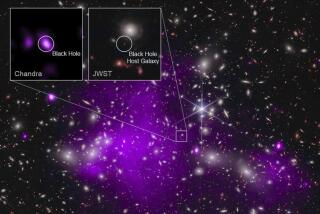Let there be light: Cosmologists reconsider epoch of reionization
Scientists call it the epoch of reionization, the period in which a newborn universe went from darkness to light as the first stars, galaxies and black holes began forming and radiating energy.
In a paper published Thursday in Nature, researchers are challenging one long-held conception about how quickly the universe began warming during this transition period.
Based on observations of X-ray emissions from binary star systems, as well as new mathematical models, cosmologists at Tel Aviv University and Harvard say that heating of the universe progressed much more slowly, and uniformly, than previously thought.
According to scientists, the reionization period began several hundred million years after the big bang, when neutral hydrogen and helium particles began to condense into clouds.
Eventually these clouds formed the first stars and galaxies, which then emitted large amounts of ultraviolet light. This energy was strong enough to ionize nearby hydrogen atoms by knocking off electrons, giving them a positive charge, scientists say.
The period ended about 1 billion years after the big bang.
To learn more about this period in the universe’s evolution, scientists have constructed radio telescopes that search for 21-centimeter-wavelength radio emissions from ancient neutral hydrogen particles.
In the Nature study, lead author Anastasia Fialkov of Tel Aviv University and colleagues wrote that X-ray emissions from early binary star systems helped to heat the hydrogen during the reionization period. Based on new observations of these binary systems, they recalculated how long it would take for the X-ray energy to spread.







